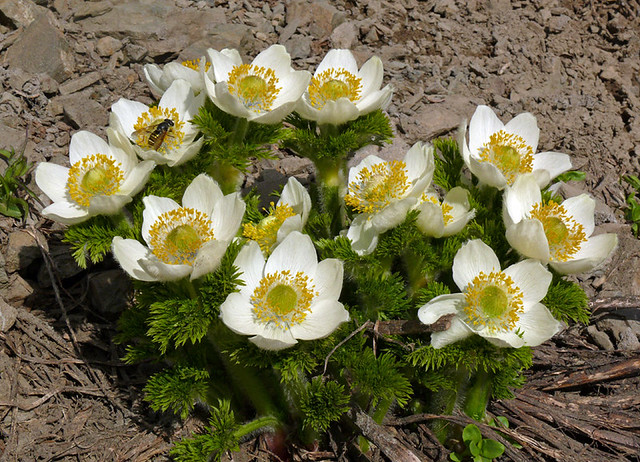
Leaves have villous hairs and their margins are pinnatifid or dissected. Plants flower briefly mid-spring to mid-summer, usually soon after the ground is exposed by melting snow. The flowers are composed of 5 to 7 sepals (sometimes called tepals), normally white or soft purple, also mixed white and blueish purple, one flower per stem. The sepals are 15 to 30 mm long and 10 to 17 mm wide. Flowers have 150-200 stamens. The fruit occurs in heads rounded to subcylindric in shape, with pedicels 15 to 20 cm long. The achenes are ellipsoid in shape, not winged, covered with villous hairs, with beaks curved that reflex as they age and 20-40 mm long, feather-like. Generally, the fruit persists into fall.

Native to far western North America including British
Columbia to California and Montana, it is found growing in gravelly soils on slopes and in moist meadows.
No comments:
Post a Comment